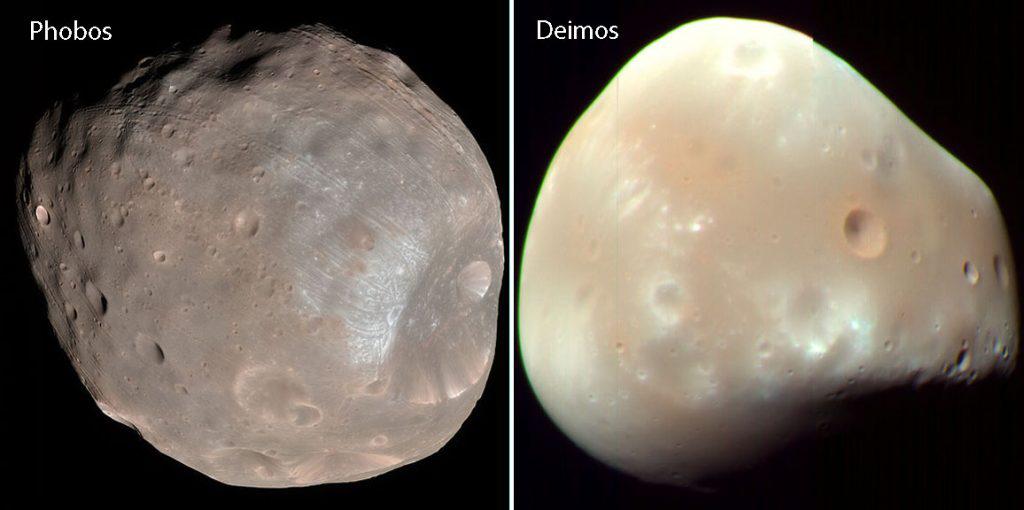The European Space Agency (ESA) has published two interesting animations made up of images of the Mars Express spacecraft. It is demonstrated by Phobos, Deimos and Jupiter.

Since its arrival to Mars in 2003, Mars Express has been studying the geology and atmosphere of the planet, and regularly photographs its surface. From time to time, the device also approaches Phobos and Deimos. Scientists use such rendezvous to learn more about the features of the structure of these unusual moons.
In addition, Mars Express is engaged in tracking the orbits of Phobos and Deimos (this is difficult to do from Earth because of their dimness compared to Mars). The fact is that both moons are exposed to strong tidal effects from the Red Planet. In particular, Phobos is gradually approaching the Martian surface. Calculations show that in just a few tens of millions of years it will be torn apart by the forces of its gravity. As for Deimos, on the contrary, it is moving away from Mars.
To determine the exact position of the moons of Mars, astronomers use them to cover other celestial bodies. By measuring the time during which Phobos or Deimos block the light of a more distant object, astronomers can calculate the parameters of their orbits.
This is exactly what happened on February 14, 2022. On that day, Deimos covered Jupiter and its four largest moons. The animation published by ESA is made up of 80 HRSC camera shots. It demonstrates how the moon alternately closes Europa, Ganymede, Jupiter, Io and Callisto. At the time of the shooting, they were at a distance of 750 million km from the device. The “swinging” of Deimos is associated with the movements of the Mars Express itself during the pointing of its camera.
Just a month later, Mars Express once again had the opportunity to clarify the orbital parameters of the moons of Mars. This time Phobos has already covered Deimos.
The published ESA animation is made up of 19 images taken by the HRSC camera on March 30, 2022. At the time of the shooting, Phobos was at a distance of 12 km from Mars Express.
Recall that Phobos and Deimos are the target of the Japanese MMX mission, which is scheduled to launch in 2024.
According to https://www.esa.int
Follow us on Twitter to get the most interesting space news in time
https://twitter.com/ust_magazine
